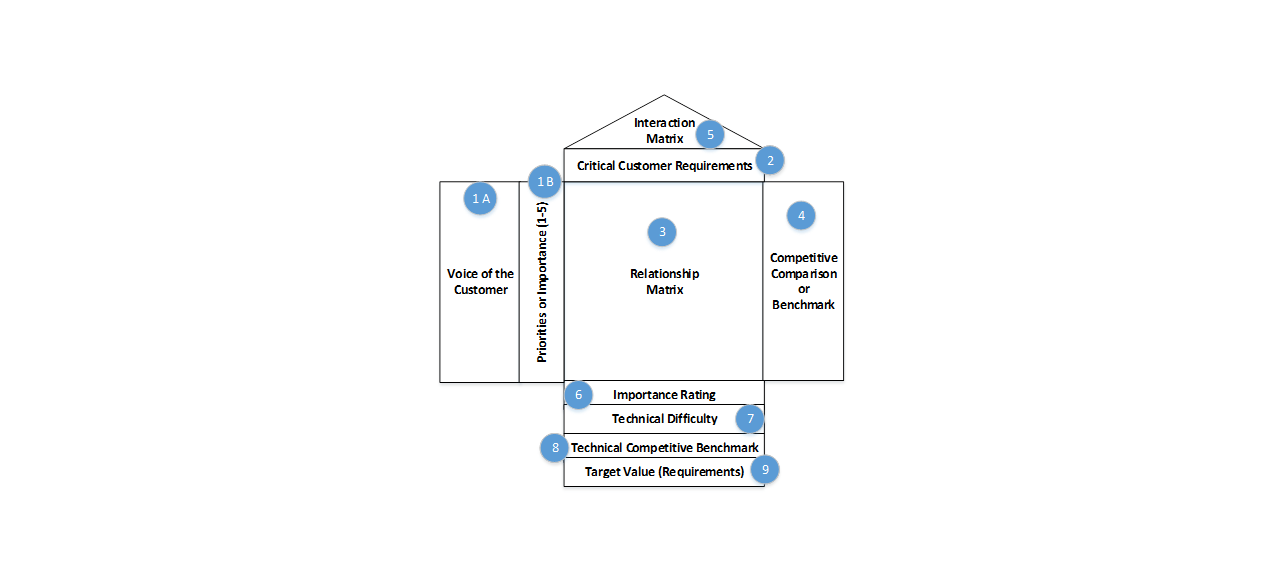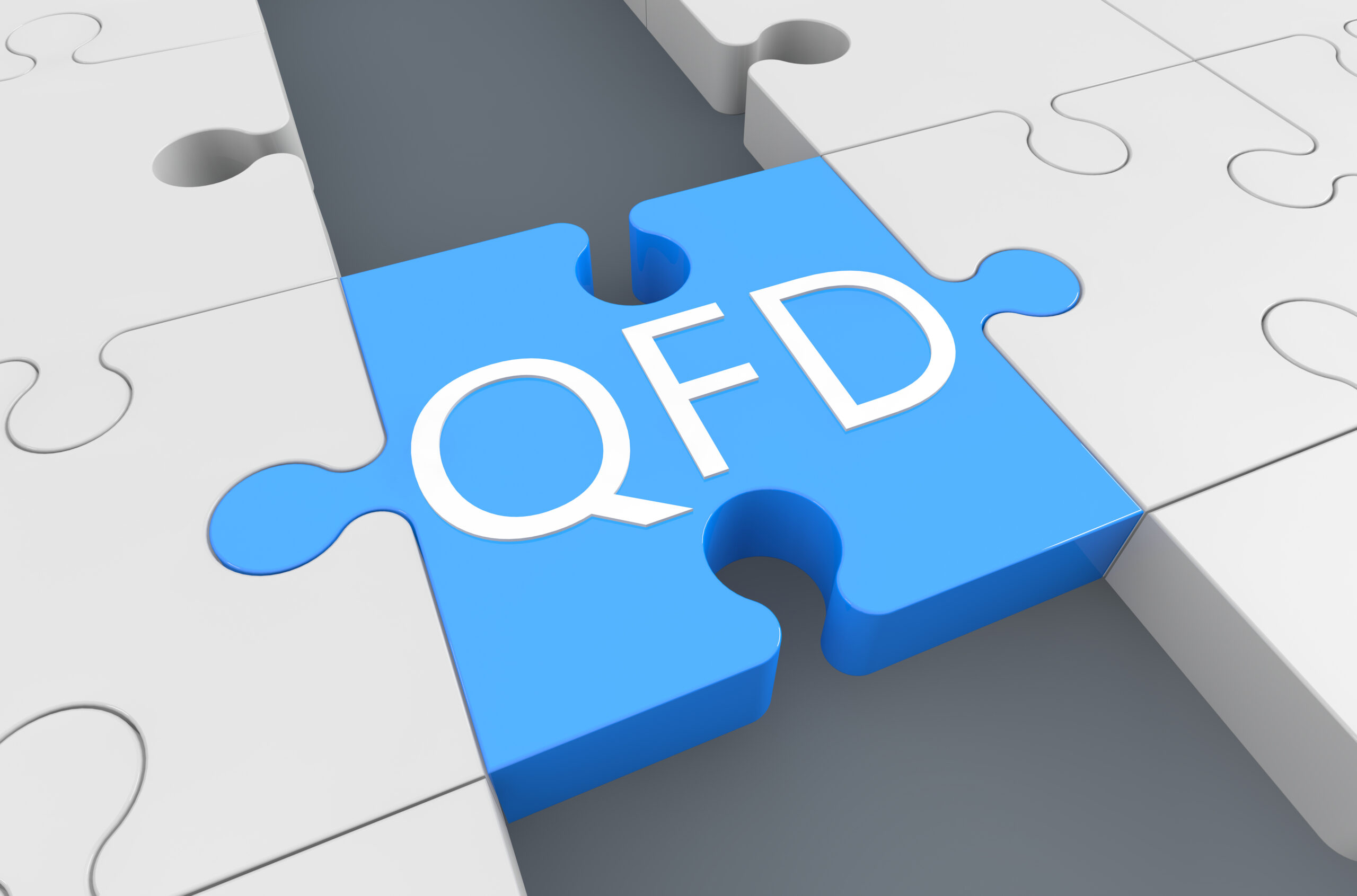Adding Rigor to VOC & VOB: Quality Function Deployment
All LSS practitioners understand the importance of the Voice of the Customer (VOC) and Voice of the Business (VOB). Determining the VOC and VOB during the Define Phase is critical to project success in the DMAIC Process. Most GBs and BBs spend little time on this activity and use basic approaches for gathering and understanding VOC/VOB. When a more systematic and rigorous approach is called for the recommended approach is Quality Function Deployment (QFD). And if a new product or service needs to be created, then QFD should be used as part of the DMEDI Process (Define, Measure, Explore, Develop & Implement phases).
What is Quality Function Deployment? According to Basic Statistics (Kiemele, et al):
QFD is a systematic process used to integrate customer requirements into every aspect of design and delivery of products and services.
Originally developed in Japan in the 1970s, Quality Function Deployment was brought to the US in 1983 and initially used in the automotive industry. Since that time QFD has been applied to a wide variety of industries including health care, electronics, R&D, and the military.
What are the benefits of QFD? They include:
- Team-based approach which combines the knowledge of multiple functions including sales, marketing, design, and operations
- Integrates (and balances) VOC & VOB through all elements of the design process
- Provides a mechanism for communicating and documenting design information
- Systematic and rigorous approach, resulting in less rework
The good news for LSS practitioners is that QFD utilizes tools they are already familiar with including the affinity diagram, brainstorming, cause & effect matrix, and tree diagram. Other LSS tools that may be used with QFD include control charts, design of experiments, and FMEA.
Also known as the House of Quality, Quality Function Deployment utilizes a series of matrices to move from raw VOC and VOB data to detailed, actionable requirements. Perhaps more powerful than determining those requirements is the agreement between the major functions engaged in the QFD Process. This agreement results in alignment of goals and a better understanding of each area’s impact on the organization’s ability to serve the customer.
As noted above, QFD provides a structured methodology to identify and prioritize customer requirements relative to business goals. The matrices noted above are arranged into multiple ‘rooms’, hence the House of Quality (see figure below). In essence, QFD translates the Voice of the Customer into measurable and prioritized critical customer requirements that will be used to develop a solution.

QFD or House of Quality Rooms
Each ‘room’ answers important questions for the product or service:
- Room 1A: Gather Voice of the Customer (VOC). What does the customer want or need?
- Room 1B: Prioritize VOC. What is the ranking of the VOC in order of importance?
- Room 2: Determine Critical Customer Requirements (CCR). What are the metrics to be used for each VOC and the direction of improvement (maximize or minimize)?
- Room 3: Relationship Matrix. What is the relationship between the VOC and CCR?
- Room 4: Competitive Comparison or Benchmarking. How does the current process compare with the competition? This is done to identify improvement opportunities.
- Room 5: Interaction Matrix. Are there any correlations between the CCR’s? The correlations can be from strong negative to neutral to strong positive.
- Room 6: Importance Rating: Determine this value by multiplying Relationship Matrix for a particular column times Importance for the corresponding column and adding all the values. This is done to prioritize each CCR.
- Room 7: What is the technical difficulty for each CCR for our company?
- Room 8: What is the Technical Competitive Benchmark?
- Room 9: What are the Target or specification Values for each CCR?
In Summary: The QFD consolidates the knowledge of sales & marketing, engineering design, and operations by deploying the VOC throughout the design process. QFD also provides a roadmap to document and communicate relevant design information. The first House of Quality can be used as the foundation to create additional Quality Houses. If you are considering using QFD on a project we recommend a more in-depth treatment of this somewhat complex subject. One good book on QFD is Quality Function Deployment: How to Make QFD Work for You (Cohen & Ficalora, 2nd ed., 2009).


